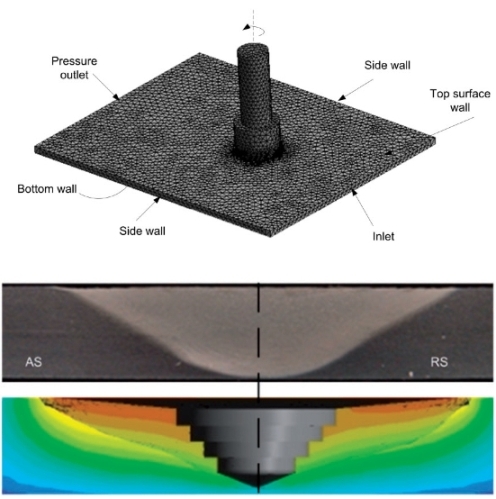Other topics
Building Physics
My research focuses mainly on indoor micro-climatic flows within buildings and confined spaces. Studies mainly include heat, mass and moisture transport in buildings.
Post-doctoral research - Friction stir welding
My two-year post-doctoral research involved the development of finite element and finite volume models for the modelling of the structural and thermofluid physics of Friction Stir Welding. In this technique, welding is carried out by means of heat generated due to friction and mixing to a plastic but non-molten (solid) state.
For modelling the flow phenomena, the metals are assumed to behave as highly viscous but non-Newtonian fluid. For this purpose a computational fluid dynamics model was developed in order to accurately predict the heat transfer and flow characteristics in the vicinity of the tool region.

Figure: Temperature distribution and geometry of the heat affected zone during Friction Stir Welding and comparison with a cross section of welded plates as obtained experimentally.
Source: Micallef, D., Camilleri, D., Toumpis, A., Galloway, A., & Arbaoui, L. (2015). Local heat generation and material flow in friction stir welding of mild steel assemblies. Proceedings of the Institution of Mechanical Engineers, Part L: Journal of Materials Design and Applications, 0(0), 1-17.
Highlight papers: Micallef, D., Camilleri, D., Toumpis, A., Galloway, A., & Arbaoui, L. (2015). Local heat generation and material flow in friction stir welding of mild steel assemblies. Proceedings of the Institution of Mechanical Engineers, Part L: Journal of Materials Design and Applications, 0(0), 1-17.
Refer to full publication list.








